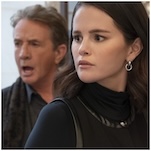Cocktail Queries: What Are the Best Replacements for Green Chartreuse?
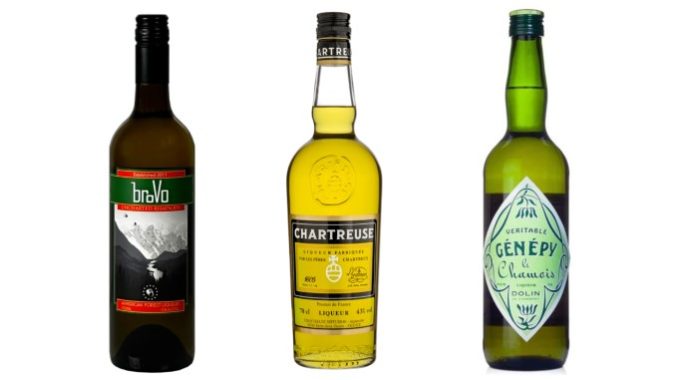
Cocktail Queries is a Paste series that examines and answers basic, common questions that drinkers may have about mixed drinks, cocktails and spirits. Check out every entry in the series to date.
It was back in early 2022 when I first began to hear a lot of rumblings about a shortage of the beloved cocktail staple herbal liqueur, Green Chartreuse. My aunt, who enjoys her Last Word cocktail, asked me if I had seen any bottles around me in Virginia, because they seemed to have entirely disappeared from the shelves in Florida. At the time, I didn’t necessarily assume it would be a lasting problem–we were in the height of pandemic/supply chain-related shortages of various goods, and there were still bottles of Chartreuse to be easily found in my own state. It seemed, at least, as if things would likely normalize with time.
But in the two years since, we’ve learned some things that all indicate the following: The Green Chartreuse shortage–and really, the shortage of both Green and Yellow Chartreuse–isn’t going to be resolved anytime soon. An artificially limited supply of these bottles, paired with demand that still seems to be growing, has created a scenario where there simply isn’t enough of the stuff to go around, and certain markets are being especially squeezed dry as a result.
The root reason for Chartreuse’s scarcity seems to be that the Carthusian monks who produce both varieties of Chartreuse (Green and Yellow) quietly decided in 2021 to no longer increase the supply of the exceedingly complex liqueur in order to keep up with demand. Like the monks of a Trappist brewery such as Westvleteren before them, they have elected to produce and sell only what is necessary to fund their monastic, religion-focused lifestyle. We can’t exactly begrudge them this, but it means that the supply of Chartreuse is not subject to typical rules of supply and demand.
That demand for Chartreuse, meanwhile, is at a high point, driven by the popularity of cocktails like the Last Word and its countless variations in bars around the world. Subsequently, it has become much harder to find, and although it is still being produced, bottles are being snapped up by bars, cocktail enthusiasts and hoarders as soon as they arrive. As I write this, the Virginia ABC website lists zero bottles of Green Chartreuse on the shelf in all of my state. The Yellow, meanwhile, is hardly any more available–the nearest bottles to me, according to the Virginia ABC, are currently 82 miles away. Compounding matters is the fact that package stores have increasingly started gouging on the already high price of Chartreuse in response to the demand.
All together, this means that this is an obvious time to explore answers to the clear question: What are the best alternatives to Green Chartreuse that you can either drink neat, or sub into classic cocktails? And indeed, this is a boom time for that particular corner of the spirits world, as small and local distillers are increasingly producing their own high-ABV herbal liqueurs that seem clearly intended to step into the niche.
We haven’t had a chance to taste all of these options, but here are a few that I can recommend.
Yellow Chartreuse
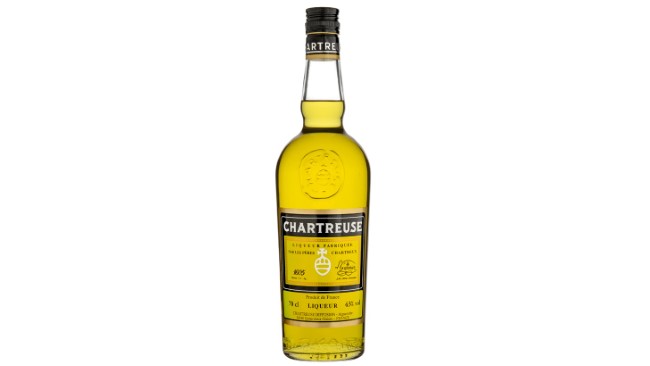
It likely goes without saying that perhaps the most obvious replacement for Green Chartreuse is to simply sub in Yellow Chartreuse instead. They aren’t the same product, being made with a different slew of botanicals, but they unsurprisingly have much in common. The biggest difference here is in terms of strength–Yellow Chartreuse weighs in at a more modest 40% ABV (80 proof) compared to the high-octane punch of Green Chartreuse at 55% ABV (110 proof). Yellow Chartreuse also has a milder herbaceous flavor, often described as possessing a friendly, honeyed sweetness balancing out the herbal bitterness. It is somewhat less spice-forward than Green Chartreuse as well.
The equally obvious downside is that depending where you live, you may find Yellow Chartreuse to be in just as short of supply as its big brother. In addition to the fact that this bottle is already part of the recipe of other popular cocktails such as the Naked and Famous, bartenders and home cocktail wonks have unsurprisingly flocked to it during the shortages, and there are probably plenty of Last Words these days being made with the more subtle, less punchy flavors of Yellow Chartreuse. It certainly does a fine job as a direct substitute if you can find it; you may just have to rejigger a drink’s ratios a little bit.
Dolin Génépy
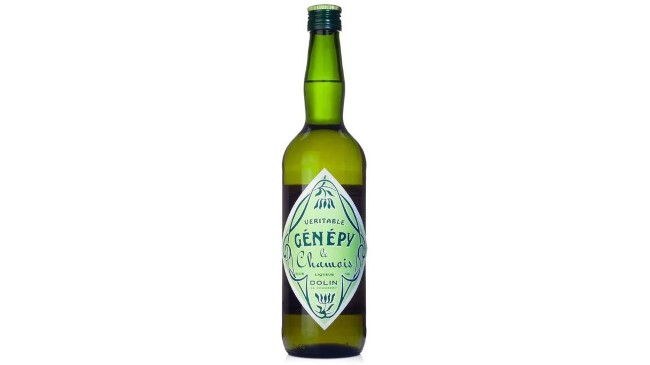
Full name: Dolin Génépy le Chamois Liqueur, ooh la la. This classic French herbal liqueur has been produced in Chambéry since 1821, having a long history comparable to Chartreuse. It’s made with a blend of 30 local herbs–which sounds like a lot, until you see that Chartreuse somehow has 130 ingredients–among them being the titular Génépy, a form of petite artemesia translated to English as “mountain sage.” It is often consumed neat, or with tonic/soda, and weighs in at a moderate 45% ABV (90 proof).
On the nose, Dolin Génépy is notably fresh and floral, as well as distinctly resinous. This one is quite bright, with notes of grapefruit and chamomile bringing distinct citrus. The palate is sweetly resinous, more overtly sweet than Green Chartreuse in comparison, with cheerful notes of citrus and fresh wildflowers. It’s significantly more gentle in its approach and bitterness level than Green Chartreuse, but very fresh and inviting at the same time. I honestly think this would make a really lovely Last Word-style cocktail, but you might want to increase the proportion of Dolin Génépy unless you want the drink to read as more gin and lime-forward than your typical Last Word.
BroVo Spirits Uncharted Rhapsody American Forest Liqueur
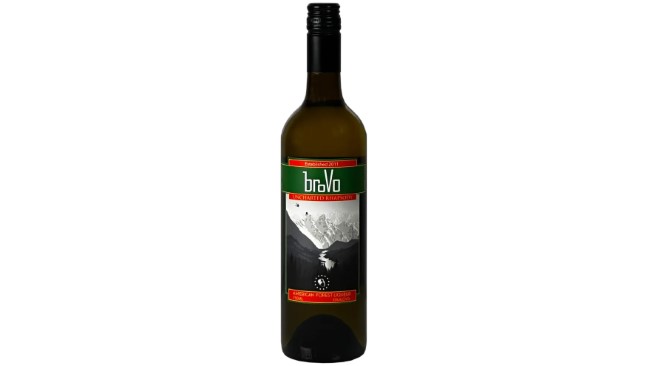
BroVo Spirits of Woodinville, Washington, is a company specializing in making particularly complex, challenging liqueurs and amari, especially for the cocktail industry. Their take on a Chartreuse analogue is complicated even by their standards, being described by the company as a “500 step process” with more than 50 ingredients. Notably, it is bottled at the full 55% ABV (110 proof) of Green Chartreuse, being one of the few potential plug-ins out there that can match Chartreuse in terms of its strength and stature. The company even went out of their way to match aspects such as BRIX and acidity, but diverged in terms of flavor, with ingredients they say reflects their own sense of place in the Pacific Northwest.
We recently reviewed this bottle, so as I wrote when tasting it:
On the nose, Uncharted Rhapsody first strikes me as distinctly minty and floral–in comparison with Green Chartreuse (which I also have on hand), the mint seems clearer to place, along with warm/citrus/floral tones of chamomile and something with a more musty, dried floral dimension. It also swings a bit more tropical simultaneously in my mind, with a character I struggled to place until I surprisingly concluded that it seemed a lot like coconut. Please note: These kinds of liqueurs are very difficult to describe and parse when drinking neat, and I have no idea if coconut is actually involved here, but that’s what it reminded me of in the moment. On the palate, things are quite well balanced between sweetness and more bitter elements. It strikes me as just a touch less assertive and bold than the Chartreuse overall, with sweet grassy, floral (elderflower) qualities that are met by herbal mint, complex cardamom-like spice and mild bitterness. None of the elements really run away with the overall profile, which is definitely what you want in this sort of thing. And yes, I am still getting more of that coconut-like note, which isn’t unpleasant though it is unexpected in a flavor profile meant to evoke the Pacific Northwest. I suspect that my palate is misidentifying some other specific ingredient here, but the effect is still pretty compelling. Notably, this holds the ABV in check nicely for it being a commanding 110 proof, and the overall profile seems more gently herbal/floral to me and less spice-forward than the Chartreuse.
Luxardo Del Santo Herbal Liqueur
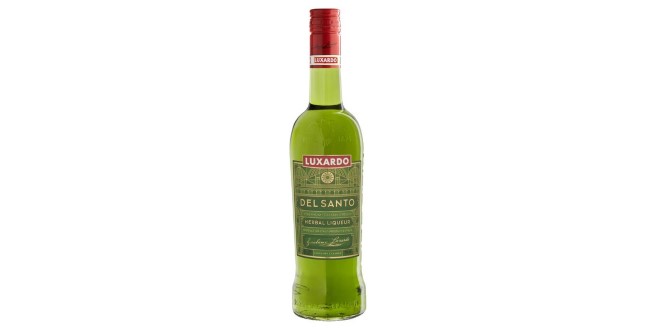
The Italian booze icons at Luxardo have been making their own Green Chartreuse analog for decades at this point, but until recently, “Liquore Sant’Antonio” wasn’t available in the U.S. This changed in January, as the now Luxardo Del Santo is now being imported for the American market, no doubt because someone is sensing an opportunity with the vacuum left by Chartreuse’s limited availability. Like all of these green-tinted liqueurs, this one is made with many macerated herbs and spices–it specifically calls out “achillea moscata, mace, galangal, cinnamon, clove, aromatic calamus, and many others.” It weighs in at a lighter 40% ABV, which puts it more into the bracket of Yellow Chartreuse, but its actual flavor ends up having quite a bit in common with bigger brother Green Chartreuse. This almost reads as a miniaturized version in fact.
On the nose, Luxardo Del Santo Herbal Liqueur is a bit milder, with sweet impressions of mint, citrus, florals, fennel and cardamom-like spice. On the palate what stands out the most is its resinous nature–quite piney and woodsy, with fennel spice, sweet citrus peel, floral impressions and dried herbs. Creeping bitterness slowly steals into this, but it’s not as stoutly bitter as Chartreuse, which plays up the sweetness. Trying a little bit of Chartreuse in comparison, the Green Chartreuse is much more intense and punchy, but the overall flavor profile is actually pretty similar–granted, the Chartreuse is a little less resinous and plays up the spice notes more, especially coriander. Still, I think the Luxardo Del Santo could make a good cocktail replacement when you’re making a drink that you want to be a bit less bold–like if you’re making a Last Word to be consumed up, in a coupe glass. All in all, though, this might be even better suited as a direct replacement for Yellow Chartreuse, given the identical ABV.
If your goal is to find a good, working replacement for Green Chartreuse in cocktails for your home bar, these bottles are a great place to start. Here’s hoping you find one that satisfies every one of your cocktail desires.
Jim Vorel is a Paste staff writer and resident liquor geek. You can follow him on Twitter for more drink writing.





























